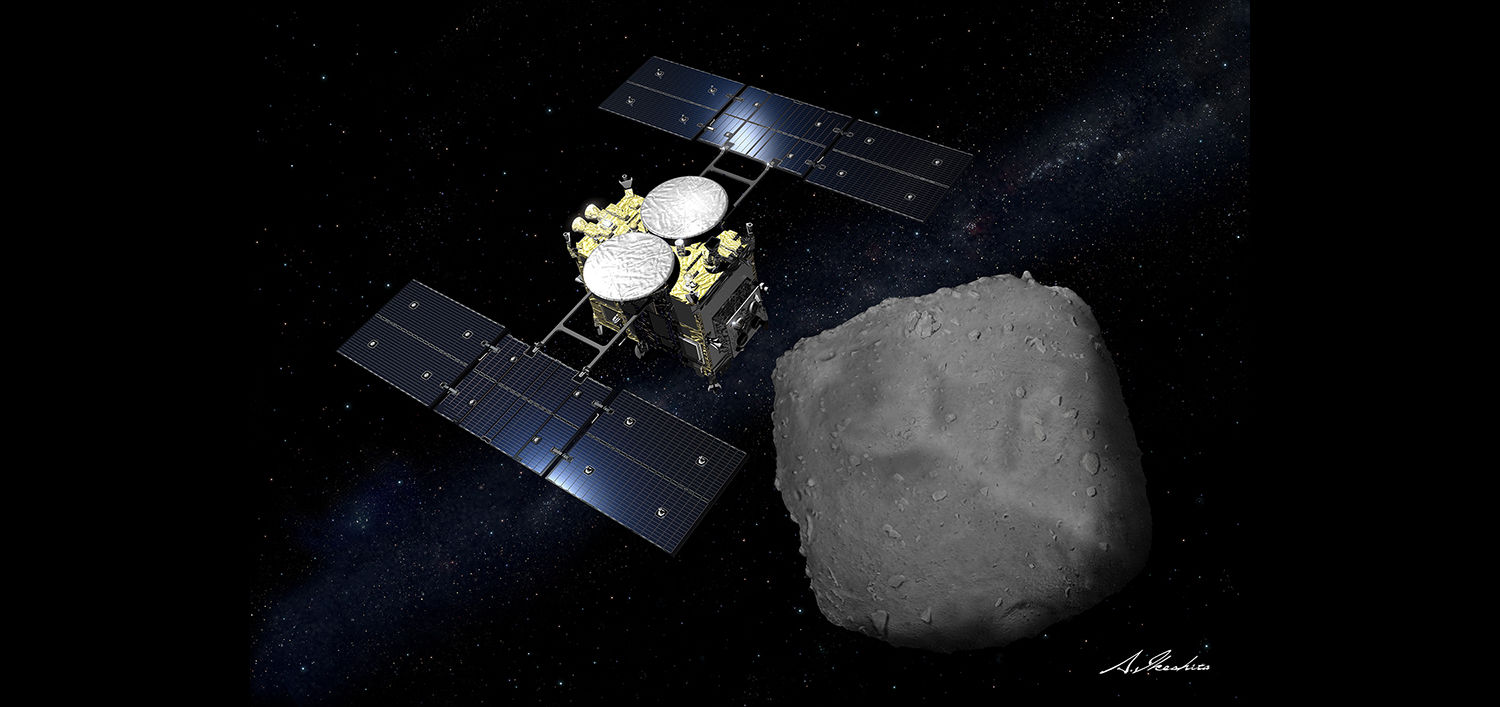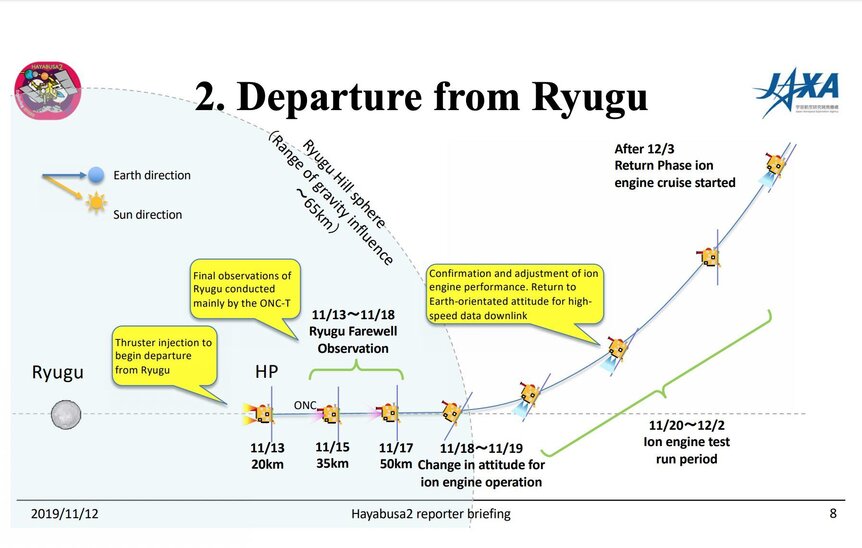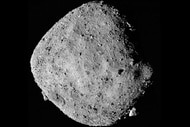Create a free profile to get unlimited access to exclusive videos, sweepstakes, and more!
Hayabusa2 is leaving the asteroid Ryugu and heading back to Earth

Hayabusa2 has left Ryugu.
On 13 November at 01:05 UTC, low-power thrusters on the Japanese Space Agency (JAXA) spacecraft fired, accelerating the probe to a meager 9.2 centimeters per second relative to the asteroid (slower than a snowflake falls on Earth), but that was enough to give it enough velocity to escape. It started from 20 km up, and Ryugu's 900-meter size is too small to have much mass, which in turn means its gravitational attraction is whisper weak.
In other words, Hayabusa2 is leaving Ryugu forever, and heading back to Earth.
The mission launched from Earth on 3 December 2014, and arrived at the diminutive asteroid on 27 June 2018. It spent the next year and a half orbiting it, imaging it, taking spectra, and performing mineralogical analysis remotely.
It also dropped four small rovers to land on the asteroid's surface. These weren't wheeled vehicles like we use on the Moon and Mars; the gravity is far too weak for that. Instead, the rovers were all rather squat boxes that tumbled on the surface, using various mechanisms to roll around and take amazing close-up images of the rocks littering Ryugu.
Not only that, but it also collected samples of the asteroid! For the first one, in February 2019, Hayabusa2 descended very slowly right down the surface. When an extended probe touched the surface, it shot a 5-gram tantalum bullet at 300 meters per second (about ten times as fast as a car traveling on a highway) right into the asteroid, sending material flying outward, some of which was captured by the spacecraft. Why tantalum? Because that's an element that is so rare it's likely not to exist in the asteroid itself, so it won't be confused for material native to Ryugu.
Hayabusa2 descended a second time in July, repeating the procedure to collect a sample from a second site. Here's video of that amazing feat:
In between the two it swapped out a gun for a cannon: From a safe distance, in April it shot a 2.5 kilogram copper slug at the asteroid at a speed of 2 kilometers per second, blasting out a large crater and sending material from well beneath the surface into space. These subsurface samples were then collected by the spacecraft as well.
So why collect these samples? The grander answer is so that we can learn about what asteroids are made of, studying material deep enough down that it is unlikely to have been exposed to the radiation and micrometeorite weathering of space, as well as getting material from the surface that has.
But the more proximate answer brings us back to the maneuvers Hayabusa2 just performed: to bring those samples back to Earth. It will turn its low-thrust ion engine back on, testing it out for the next couple of weeks, then on 3 December will begin the long burn to put the spacecraft on a return trajectory to Earth. It'll take about a year to get here, but it won't be staying: The main spacecraft will sail on past us, but not before ejecting a capsule where the samples are safely stored. That will use our atmosphere to brake, then deploy a parachute to land in Australia, where the precious cargo will be picked it up and transferred to a lab where very excited scientists will spend the next few years examining them.
As for Hayabusa2 itself, it still has some fuel for maneuvering, so the mission may be extended. If so, it only has enough fuel to change the direction of its trajectory, and not enough to slow down and orbit any target. One potential target for this flyby is the asteroid 2001 WR1, a ~600 meter wide, rocky near-Earth asteroid which it could pass in June 2023. All it would be able to do is take images and spectra, but that's still a pretty nice bonus for an already amazingly successful mission.
Not only is Hayabusa2 not done, we still have NASA's OSIRIS-REx hanging out at the even wee-er asteroid Bennu, and it too will be soon be collecting samples from the surface for eventual return to Earth. Site selection has begun, and those samples will return to Earth in 2023.
So Hayabusa2 leaving Ryugu is bittersweet; it's always hard to leave, but what we get in return — literally — are untouched pieces of an asteroid, treasures from the long eons of our solar system's history, a textbook with pages we have yet to read.
I think that puts a lot more emphasis on the sweet than the bitter. My sincere congratulations to JAXA and the Hayabusa2 team, which have done a phenomenal job in making this mission such a success so far. May the next phase go as well.















